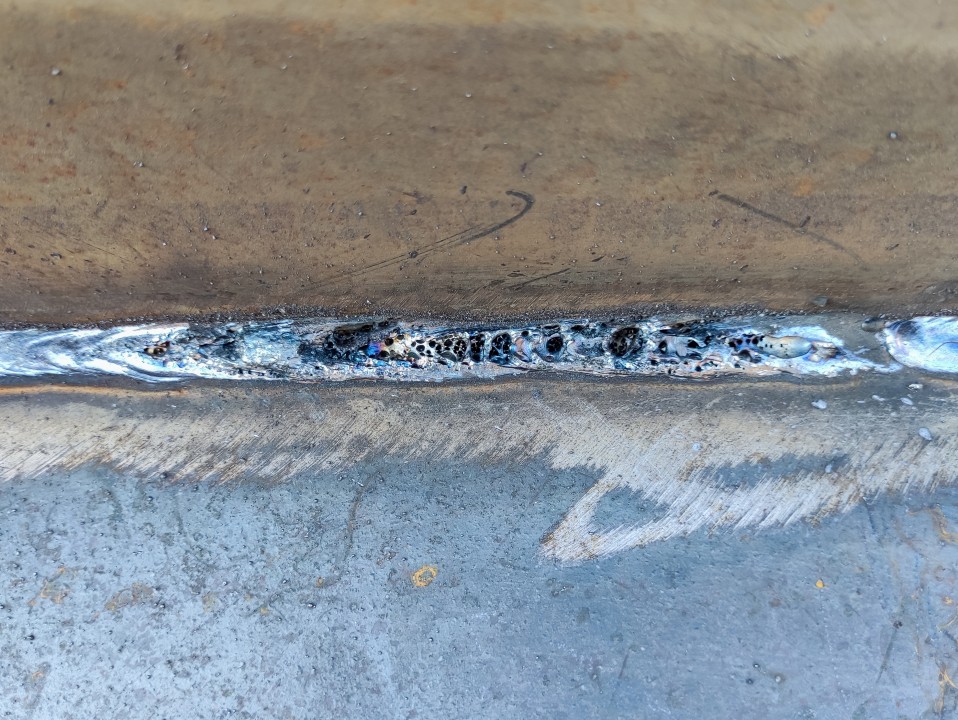The Scientific Research Behind Porosity: A Comprehensive Overview for Welders and Fabricators
Comprehending the detailed systems behind porosity in welding is crucial for welders and makers pursuing impressive craftsmanship. As metalworkers look into the depths of this phenomenon, they reveal a globe governed by numerous elements that affect the formation of these minuscule gaps within welds. From the structure of the base products to the intricacies of the welding process itself, a multitude of variables conspire to either intensify or alleviate the existence of porosity. In this comprehensive guide, we will certainly decipher the scientific research behind porosity, exploring its results on weld quality and unveiling advanced techniques for its control. Join us on this trip through the microcosm of welding imperfections, where accuracy fulfills understanding in the search of flawless welds.
Recognizing Porosity in Welding
FIRST SENTENCE:
Exam of porosity in welding reveals crucial insights into the honesty and quality of the weld joint. Porosity, defined by the presence of dental caries or voids within the weld metal, is a common concern in welding processes. These voids, otherwise properly attended to, can jeopardize the architectural stability and mechanical buildings of the weld, bring about prospective failures in the finished product.

To find and evaluate porosity, non-destructive screening approaches such as ultrasonic screening or X-ray evaluation are usually used. These strategies enable the recognition of interior problems without endangering the honesty of the weld. By analyzing the size, form, and distribution of porosity within a weld, welders can make enlightened decisions to boost their welding processes and accomplish sounder weld joints.

Factors Influencing Porosity Development
The occurrence of porosity in welding is affected by a myriad of elements, varying from gas protecting efficiency to the intricacies of welding criterion settings. One important aspect adding to porosity development is poor gas securing. When the shielding gas, commonly argon or CO2, is not effectively covering the weld pool, climatic gases like oxygen and nitrogen can infect the liquified metal, bring about porosity. Additionally, the tidiness of the base products plays a substantial duty. Contaminants such as rust, oil, or dampness can vaporize throughout welding, producing gas pockets within the weld. Welding parameters, consisting of voltage, current, travel speed, and electrode kind, likewise effect porosity development. Utilizing inappropriate settings can create too much spatter or warmth input, which in turn can result in porosity. Furthermore, the welding strategy employed, such as gas steel arc welding (GMAW) or secured metal arc welding (SMAW), can affect porosity formation due to variants in heat circulation and gas protection. Understanding and managing these variables are crucial for lessening porosity in welding operations.
Results of Porosity on Weld Top Quality
The presence of porosity also deteriorates the weld's resistance to deterioration, as the entraped air or gases within the gaps can respond with the surrounding setting, leading to deterioration over time. Furthermore, porosity can prevent the weld's capability to endure pressure or influence, additional jeopardizing the general high quality and integrity of the bonded framework. In essential applications such as aerospace, automobile, or structural buildings, where security and resilience are extremely important, the detrimental impacts of porosity on weld high quality can have serious effects, emphasizing the significance of decreasing porosity with correct welding methods and procedures.
Methods to Reduce Porosity
Additionally, using the proper welding criteria, such as the right voltage, existing, and take a trip rate, is important in stopping porosity. Preserving a consistent arc size and angle throughout welding also assists minimize the possibility of porosity.

Furthermore, picking the right shielding gas and preserving correct gas circulation prices are necessary in minimizing porosity. Using the appropriate welding technique, such as back-stepping or employing a weaving activity, can also aid i was reading this distribute warm equally and lower the opportunities of porosity development. Ensuring correct ventilation in the welding setting to eliminate any type of potential sources of contamination is vital for see post attaining porosity-free welds. By implementing these methods, welders can successfully reduce porosity and create top notch bonded joints.

Advanced Solutions for Porosity Control
Applying innovative innovations and ingenious methods plays a pivotal function in accomplishing exceptional control over porosity in welding procedures. Furthermore, using advanced welding methods such as pulsed MIG welding or modified ambience welding can additionally assist alleviate porosity problems.
Another advanced remedy involves the usage of sophisticated welding tools. As an example, making use of equipment with integrated features like waveform control and sophisticated power sources can boost weld high quality and reduce porosity risks. The execution of automated welding systems with specific control over parameters can considerably reduce porosity problems.
In addition, incorporating advanced surveillance and evaluation technologies such as real-time X-ray imaging or automated ultrasonic testing can assist in spotting porosity early in the welding procedure, permitting instant restorative activities. In general, integrating these sophisticated solutions can greatly enhance porosity control and improve the overall quality of bonded components.
Conclusion
Finally, recognizing the scientific research behind porosity in welding is crucial for welders and producers to create high-grade welds. By recognizing the factors influencing porosity formation and applying methods to reduce it, over at this website welders can enhance the general weld high quality. Advanced remedies for porosity control can better improve the welding procedure and guarantee a strong and dependable weld. It is essential for welders to continually enlighten themselves on porosity and carry out best practices to achieve ideal outcomes.
Comments on “What is Porosity in Welding: Vital Tips for Getting Flawless Welds”